
You’ve tried before. You bought the new workout clothes, downloaded the app, and maybe even signed up for a gym membership. For a week, or maybe two, you felt the surge of motivation. You were finally going to build a consistent workout routine. But then, life happened. A late night at the office, a demanding project, or just the sheer exhaustion that comes from navigating a busy, modern life. Your willpower, which felt like an unshakeable fortress, crumbled. The gym shoes went back in the closet, and the guilt set in.
If this story feels familiar, you are not alone. So many of us believe that building durable fitness habits is a matter of pure grit and determination. We think we need to force ourselves into action through sheer willpower. But for most people, especially those living in demanding urban environments filled with constant distractions and obligations, willpower is a finite resource. It’s like a phone battery; it starts full in the morning but drains with every decision, every traffic jam, and every unexpected email. Relying on it to power a new, demanding habit is a recipe for burnout.
The problem isn’t your motivation or your character. The problem is the approach. You’ve been trying to climb a mountain in a single leap when the secret lies in taking one small, manageable step, day after day.
This article will not ask you to “just do it.” Instead, it will give you a gentle, realistic, and scientifically-grounded system for building a workout habit that lasts. We will move away from the all-or-nothing mindset and embrace a framework built on tiny actions, smart environmental design, and self-compassion. This is how you create a habit that becomes as automatic as brushing your teeth—something you do not because you have to, but because it’s simply part of who you are.
📚 Table of Contents
- The Engine of Habit: Understanding Your Brain’s Operating System
- Designing Your System for a Consistent Workout Routine
- 1. Start with a Minimum Viable Action (MVA)
- 2. Conduct a Friction Audit
- 3. Engineer Your Environment with Cues
- 4. Build in Gentle Accountability
- Safeguards for the Real World: What to Do When You Fall Off Track
- Putting It All Together: Two Worked Examples
- Frequently Asked Questions About Building a Workout Habit
- How long does it really take to form a workout habit?
- What should I do on days I travel or feel sick?
- I’m being consistent, but I’ve hit a plateau. What now?
- Can I try to build multiple fitness habits at once?
- What if I just don’t feel motivated to work out?
- Your First Month of Consistency
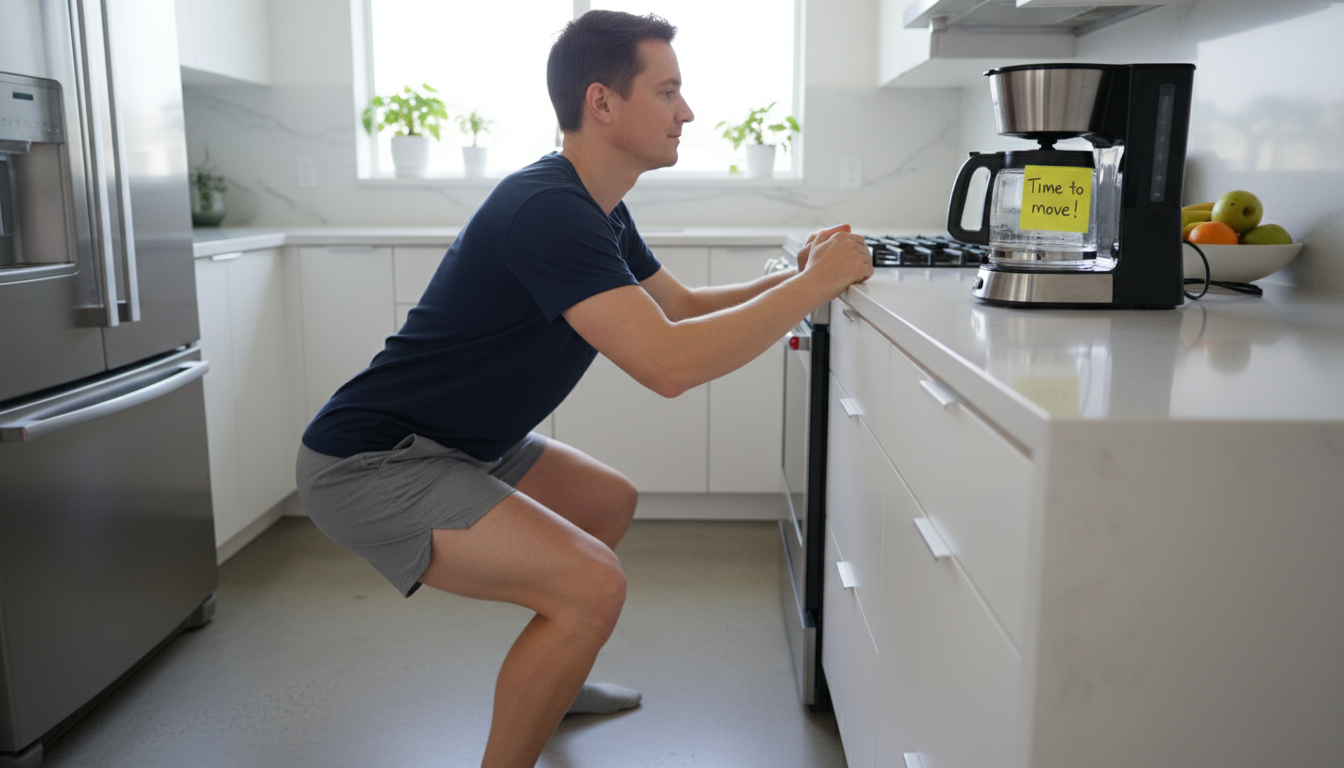
The Engine of Habit: Understanding Your Brain’s Operating System
Before we can build a new habit, we need to understand how habits work. They aren’t magical; they are a neurological process that your brain uses to save energy. Think about the first time you drove a car. You had to consciously think about every single action: the key, the brake, the turn signal, the mirror. Now, you likely do it all without a second thought. Your brain automated the process into a habit.
This automation follows a simple, three-step pattern known as the habit loop. Understanding this loop is the first step in learning how to build a workout habit that sticks.
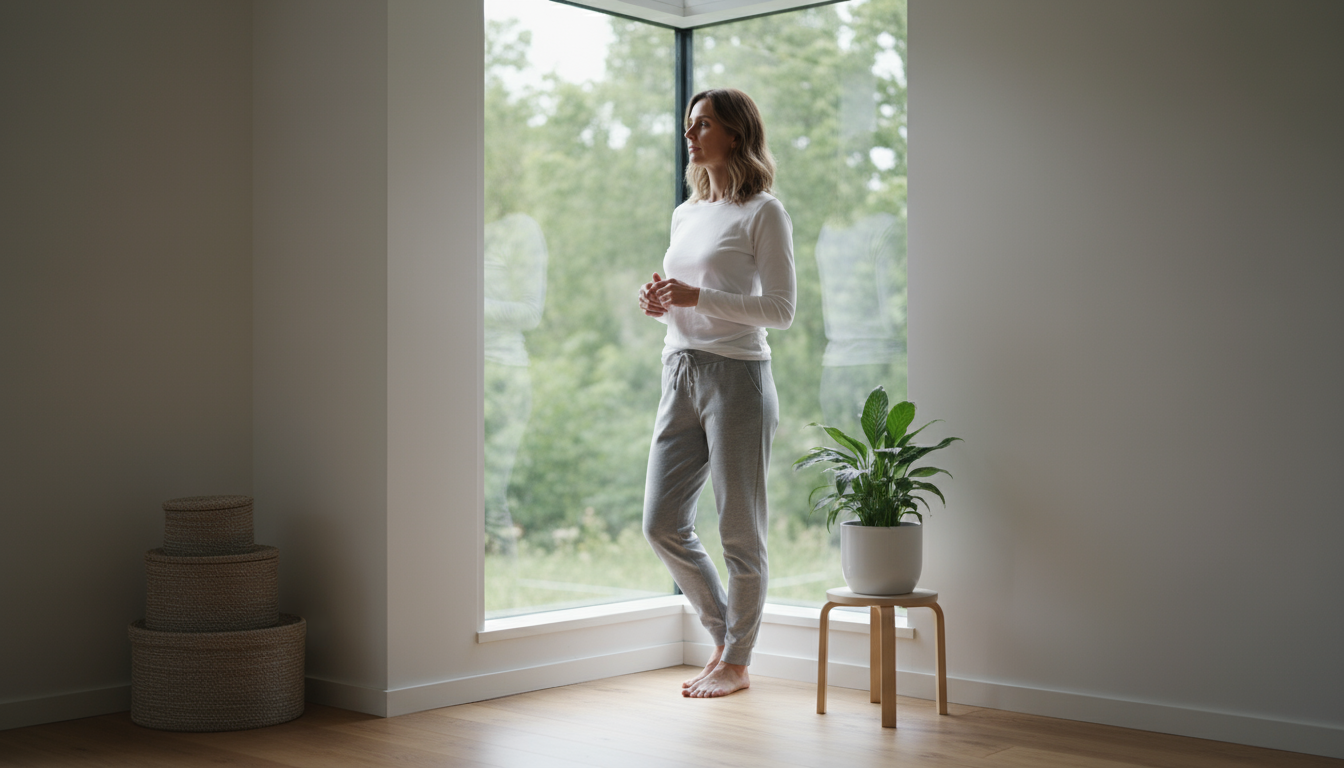
The Habit Loop: Cue, Action, Reward
At its core, every habit you have—good or bad—is driven by this simple neurological loop. Let’s break it down in plain English.
1. The Cue (The Trigger): This is the signal that tells your brain to go into automatic mode and which habit to use. A cue can be a time of day (7:00 AM), a location (your kitchen), an emotional state (feeling stressed), or the action that precedes it (finishing dinner). For an unhealthy habit, the cue might be seeing the TV remote, which triggers you to sit on the couch.
2. The Action (The Routine): This is the behavior itself—the habit you perform. It can be physical, mental, or emotional. Following the cue of the TV remote, the action is plopping down on the couch and turning on your favorite streaming service.
3. The Reward (The Payoff): This is what satisfies the craving and tells your brain, “Hey, this loop is worth remembering for the future.” The reward is the reason the habit exists. In our example, the reward is the feeling of relaxation, distraction, or entertainment you get from watching TV. This positive reinforcement makes you more likely to repeat the loop the next time the cue appears.
When you try to build a consistent workout habit using only willpower, you are essentially fighting this powerful, ingrained system. A more effective approach is to work with the habit loop, not against it. We can consciously design a new loop that serves our fitness goals.

Beyond Actions: The Power of Identity-Based Habits
Now, let’s add a deeper, more powerful layer to this model. Many of us frame our goals around outcomes. We say, “I want to lose 10 pounds,” or “I want to run a 5k.” These are great goals, but they are external. A more durable approach is to focus on your identity.
This is the concept of identity-based habits. Instead of focusing on what you want to achieve, you focus on who you wish to become. The goal is not to “run three times a week.” The goal is to “become a runner.” The goal is not to “lift weights.” The goal is to “become a strong person who prioritizes their health.”
Why is this shift so powerful? Because your behaviors are often a reflection of your identity. When your actions are in conflict with your self-image, it’s difficult to maintain them. But when you start to believe, “I am an active person,” showing up for a workout is no longer a chore; it’s simply an act of reinforcing who you already are. Every time you perform your tiny workout action, you are casting a vote for this new identity. One push-up might not transform your body overnight, but it does cast a vote for “I am someone who works out.” Over time, these votes accumulate and solidify your new identity, making the habit feel natural and authentic.
So, as we move into designing your habit, ask yourself this question: Who is the type of person who achieves the health I want? The answer might be, “A person who is consistent,” or “A person who moves their body every day.” This identity will be your North Star.

Designing Your System for a Consistent Workout Routine
With a clear understanding of the habit loop and the power of identity, we can now move from theory to practice. This is the architectural phase, where we design a system so effective that your desired habit becomes the path of least resistance. We will focus on four key components: defining your minimum viable action, auditing friction, designing your environment, and building in accountability.
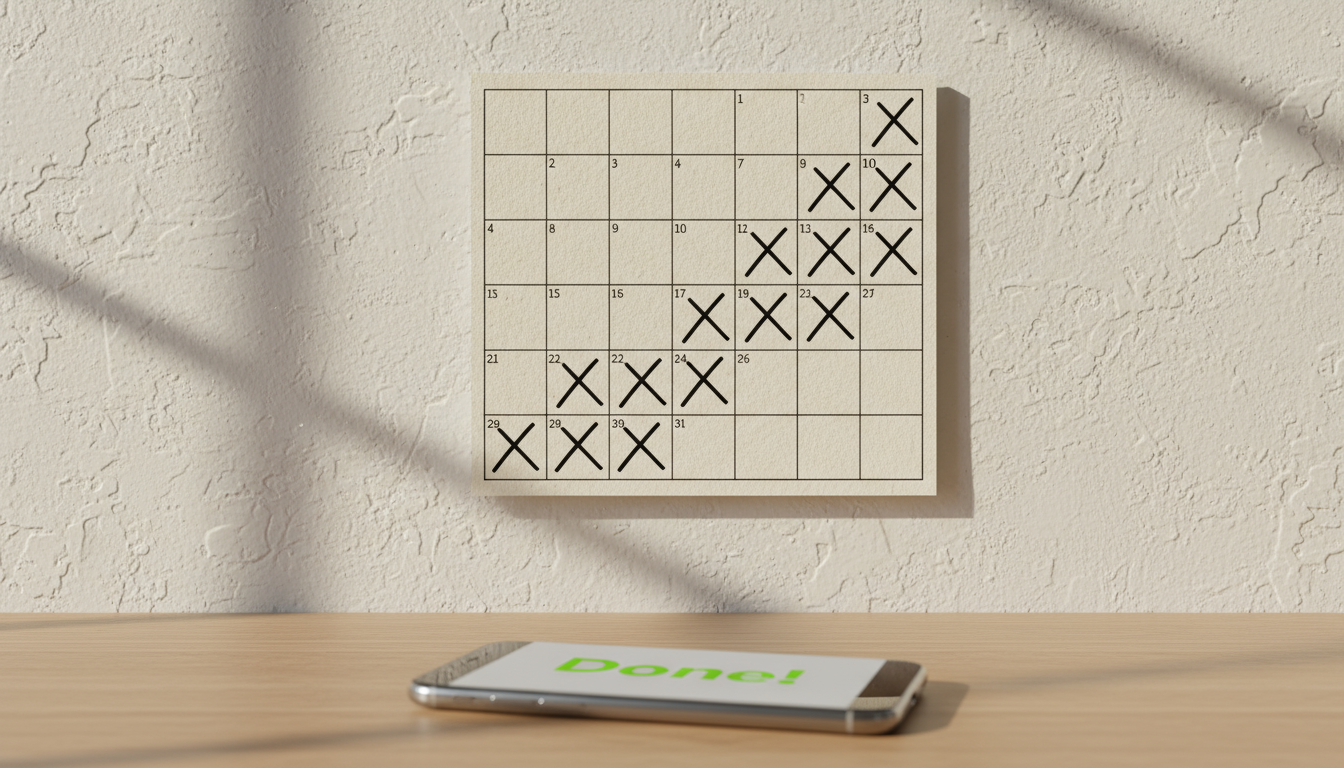
1. Start with a Minimum Viable Action (MVA)
The single biggest mistake people make when starting a new workout habit is making it too big. They go from zero to a one-hour gym session, five days a week. It’s unsustainable. The initial motivation fades, and the sheer size of the task becomes a reason to skip it. “I don’t have a full hour” becomes the excuse.
The solution is the Minimum Viable Action, or MVA. An MVA is the smallest, simplest version of your desired habit that you can do even on your worst day. It should be so easy that it feels almost ridiculous not to do it. The goal of the MVA is not to get a killer workout; the goal is to show up and cast a vote for your new identity.
What does an MVA look like in practice?
- If you want to start running, your MVA is to put on your running shoes and step outside for one minute.
- If you want to start doing yoga, your MVA is to roll out your yoga mat and do one stretch.
- If you want to start strength training, your MVA is to do one push-up or one bodyweight squat.
The beauty of the MVA is that it short-circuits your brain’s resistance. You can’t say you don’t have time for one push-up. You can’t say you’re too tired to roll out a mat. By making the starting line incredibly easy to cross, you build the most important part of any habit: consistency. You are training the “showing up” muscle. Often, once you start, you’ll find you want to do more. But on the days you don’t, you can do your MVA, mark it as a win, and maintain your momentum.

2. Conduct a Friction Audit
Friction is anything that stands between you and your desired action. It’s the effort, time, or mental energy required to get started. Our brains are wired to conserve energy, so we naturally gravitate toward low-friction activities. To build a consistent workout habit, your job is to decrease the friction for your workout and, if possible, increase the friction for the habits you want to replace.
To decrease friction for your workout habit:
- Prepare in advance. If your goal is a morning workout, lay out your workout clothes, shoes, and water bottle the night before. If you’re doing a home workout, have the video cued up and your mat already in place.
- Reduce the number of steps. If your gym is a 20-minute drive away, that’s a lot of friction. Could you start with a home workout routine instead? The fewer decisions and steps between you and the action, the better.
- Choose something you enjoy. If you hate running, don’t try to build a running habit. Maybe you prefer dancing, hiking, or cycling. Choosing an activity you genuinely find pleasurable is a powerful way to reduce mental friction.
To increase friction for competing habits:
- Hide the triggers. If you tend to mindlessly scroll on your phone instead of working out, put your phone in another room or turn it off during your designated workout time.
- Add steps to the process. If your default is to crash on the couch after work, place your yoga mat or a dumbbell on the couch in the morning. Now, to sit down, you first have to physically move the object that reminds you of your new habit.
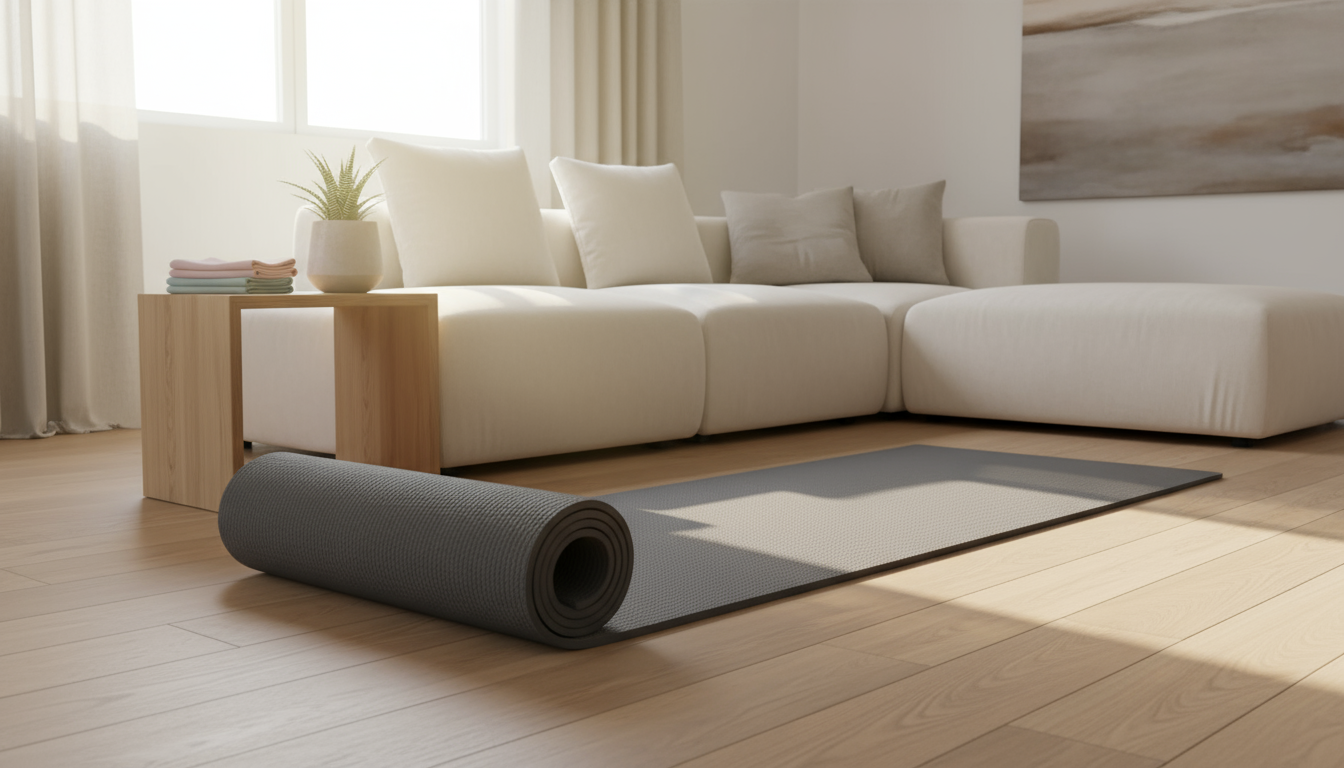
3. Engineer Your Environment with Cues
Your environment is one of the most powerful and invisible forces shaping your behavior. By consciously designing your space, you can create obvious cues that trigger your workout habit. The goal is to make your desired action the next logical step.
Think about the first part of the habit loop: the cue. We can strategically place cues in our environment to prompt the behavior we want. For more information on how environments shape behavior, you can explore resources from organizations like the American Psychological Association.
Examples of environmental design:
- Visual Cues: Place your running shoes directly by the front door. Leave your yoga mat unrolled in the corner of your living room. Hang your resistance bands on your doorknob. Make the tools for your habit impossible to ignore.
- Time-Based Cues (Habit Stacking): This is a powerful technique where you link your new habit to an existing, established one. The completion of the old habit becomes the cue for the new one. This is called habit stacking. For example: “After I brush my teeth in the morning (existing habit), I will do my one minute of stretching (new habit).” Or, “After I put my work laptop away (existing habit), I will immediately change into my workout clothes (new habit).”
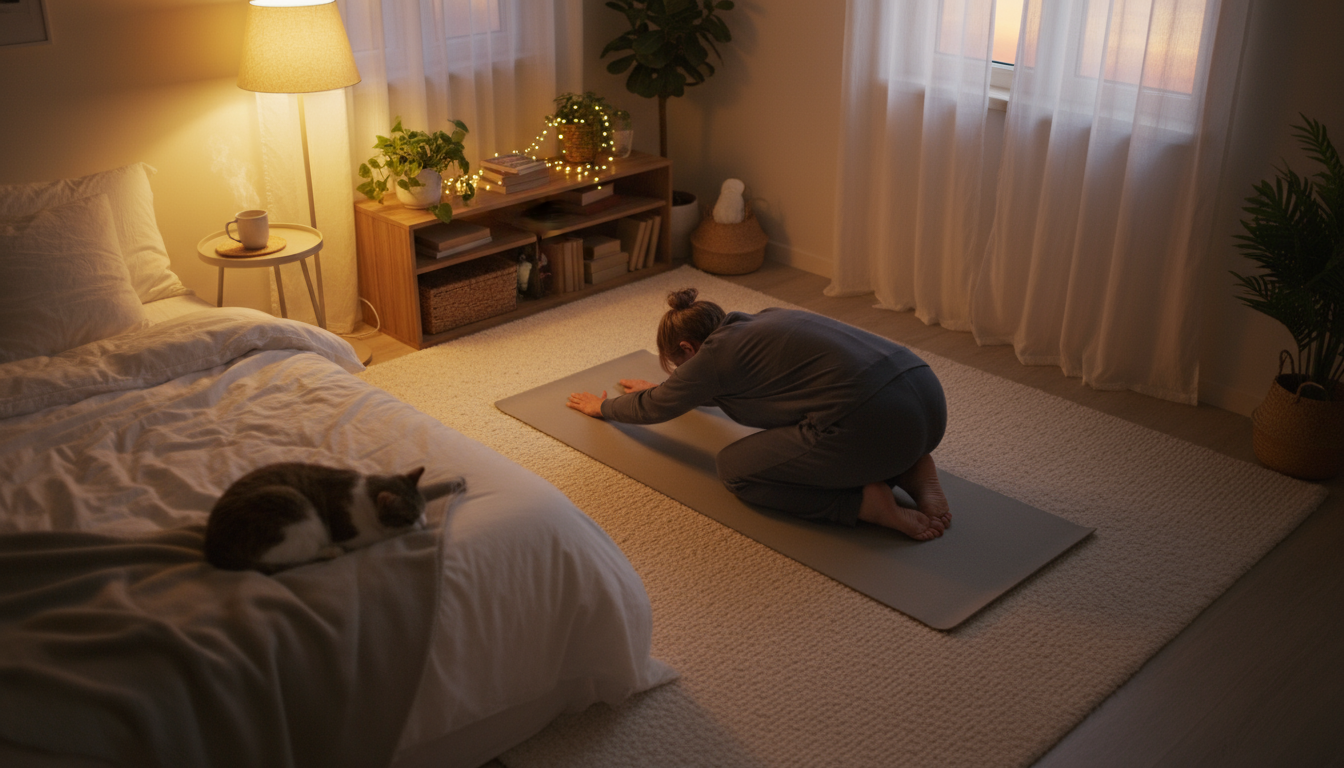
4. Build in Gentle Accountability
Accountability doesn’t have to mean having a drill sergeant yelling at you. It can be a gentle, supportive system that encourages you to stay on track. The simple act of tracking your progress can be a powerful motivator.
Habit Tracking: Get a simple wall calendar and draw a big ‘X’ on each day you complete your MVA. Don’t break the chain. The visual evidence of your streak can be incredibly satisfying and provide a reason to show up on days you don’t feel like it.
Find a Partner: Share your goal with a friend or family member. This could be a workout buddy you exercise with, or simply someone you send a text to each day saying, “Done!” Knowing someone else is aware of your goal can provide a powerful social incentive to stick with it.
By thoughtfully designing your system using these four components, you shift the burden from willpower to your environment and your routines. You make consistency the easy choice, not the hard one.

Safeguards for the Real World: What to Do When You Fall Off Track
Perfection is not the goal. Consistency is. In any long-term journey, there will be days when you get sick, travel, or simply get knocked off course by life’s unpredictability. A robust system doesn’t just help you get started; it helps you get back on track quickly and without shame. This is where planning for failure becomes a critical part of success.
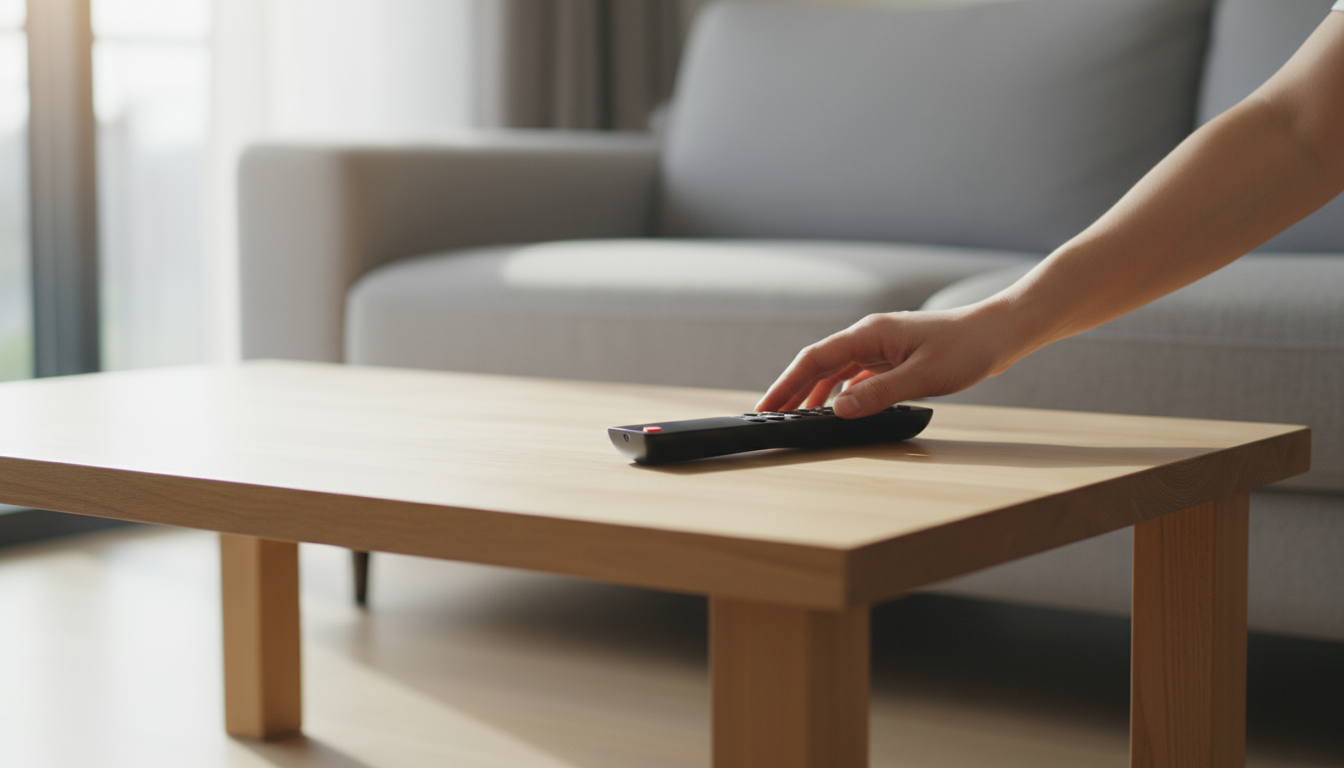
1. The “Never Miss Twice” Rule
This is perhaps the most important rule for building durable fitness habits. Missing one workout is an accident. Missing two is the start of a new, undesirable habit. Life will inevitably cause you to miss a day. The key is to not let that one day become two, then three, then a return to your old patterns.
When you miss a day, don’t waste energy on guilt. Guilt is a counterproductive emotion that can lead to an all-or-nothing spiral (“Well, I’ve already blown it, so I might as well give up”). Instead, treat it as a data point. Ask yourself: what caused me to miss? Was the friction too high? Did an unexpected event occur? Then, make a simple plan to get back on track the very next day, even if it’s just your Minimum Viable Action. The goal is to immediately stop the bleeding and re-establish your momentum. One bad meal doesn’t make an unhealthy person, and one missed workout doesn’t break a consistent workout routine. The comeback is what matters.
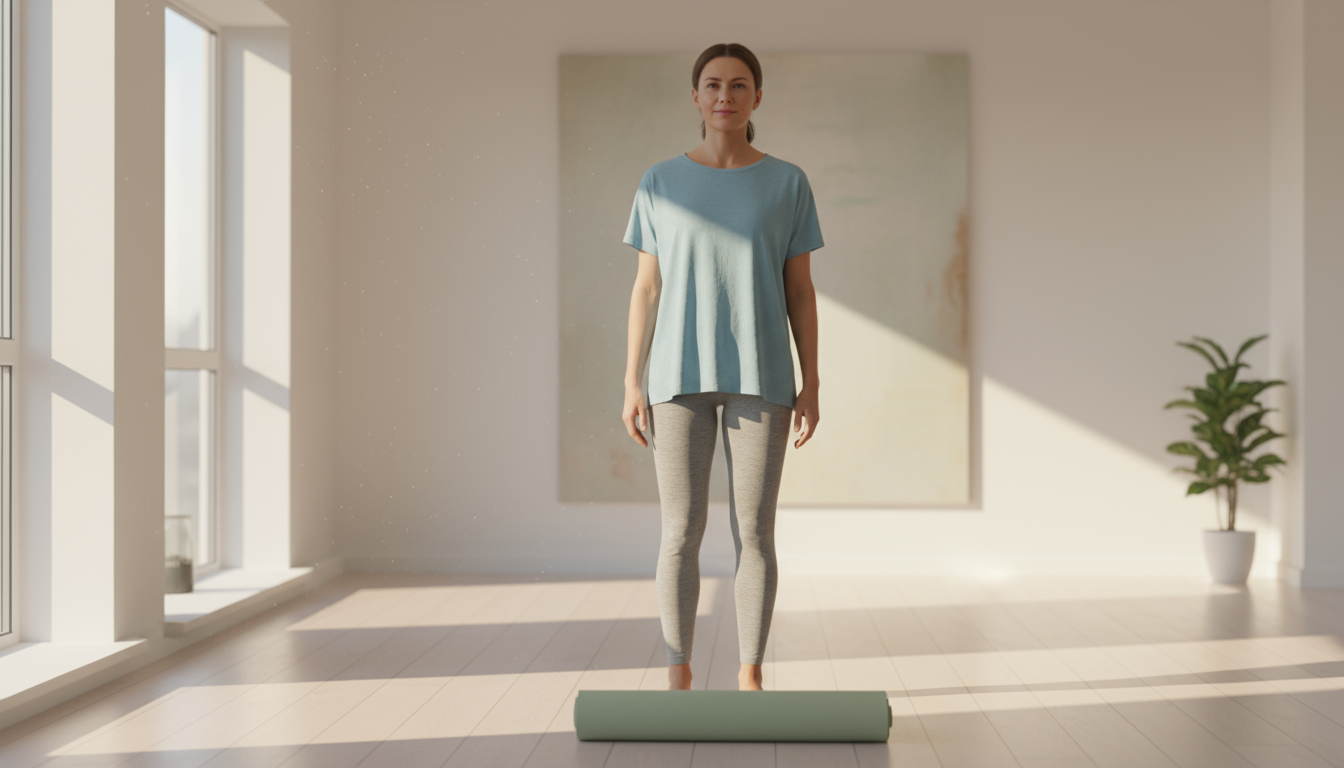
2. The Psychology of Streaks
Tracking your habit with a streak—like the calendar method mentioned earlier—can be highly motivating. Seeing a chain of successful days builds confidence and identity. You start to see yourself as “someone who works out,” and you become protective of that streak. This is positive reinforcement in action.
However, streaks can also be a double-edged sword. If you become too attached to an unbroken streak, the day you inevitably have to miss can feel catastrophic. It can trigger that same all-or-nothing thinking. The key is to hold the streak lightly. Use it as a tool for motivation, but define your success by your overall consistency, not by an unbroken chain. If your streak breaks at 50 days, that’s not a failure. That’s 50 successful days! Celebrate that achievement and start a new streak the next day with a simple goal: “Let’s get one.”

3. Resetting Without Shame
Self-compassion is a superpower in behavior change. The inner voice that criticizes you for slipping up is not helping; it’s making it harder to restart. When you fall off track, your first response should be one of kindness, not judgment. Talk to yourself as you would a good friend who is trying their best.
Instead of saying, “I’m so lazy, I can never stick to anything,” try reframing it: “Yesterday was a really tough day, and I didn’t have the energy. That’s okay. Today is a new day, and I’m going to get back to my routine by doing my one squat. I’m proud of myself for not giving up.”
Remember, the goal is not a perfect record. The goal is a lifelong relationship with movement and health. There will be ups and downs. A successful system anticipates these downs and provides a clear, compassionate path back to the “up.” By planning for relapse, understanding the psychology of your own motivation, and treating yourself with kindness, you build a resilient habit that can withstand the tests of real life.

Putting It All Together: Two Worked Examples
Let’s translate these concepts into two simple, real-world routines. Notice how each is built around a cue, a minimum viable action, and a clear reward. These are not about punishing workouts; they are about creating small, positive rituals that reinforce your identity as an active person.
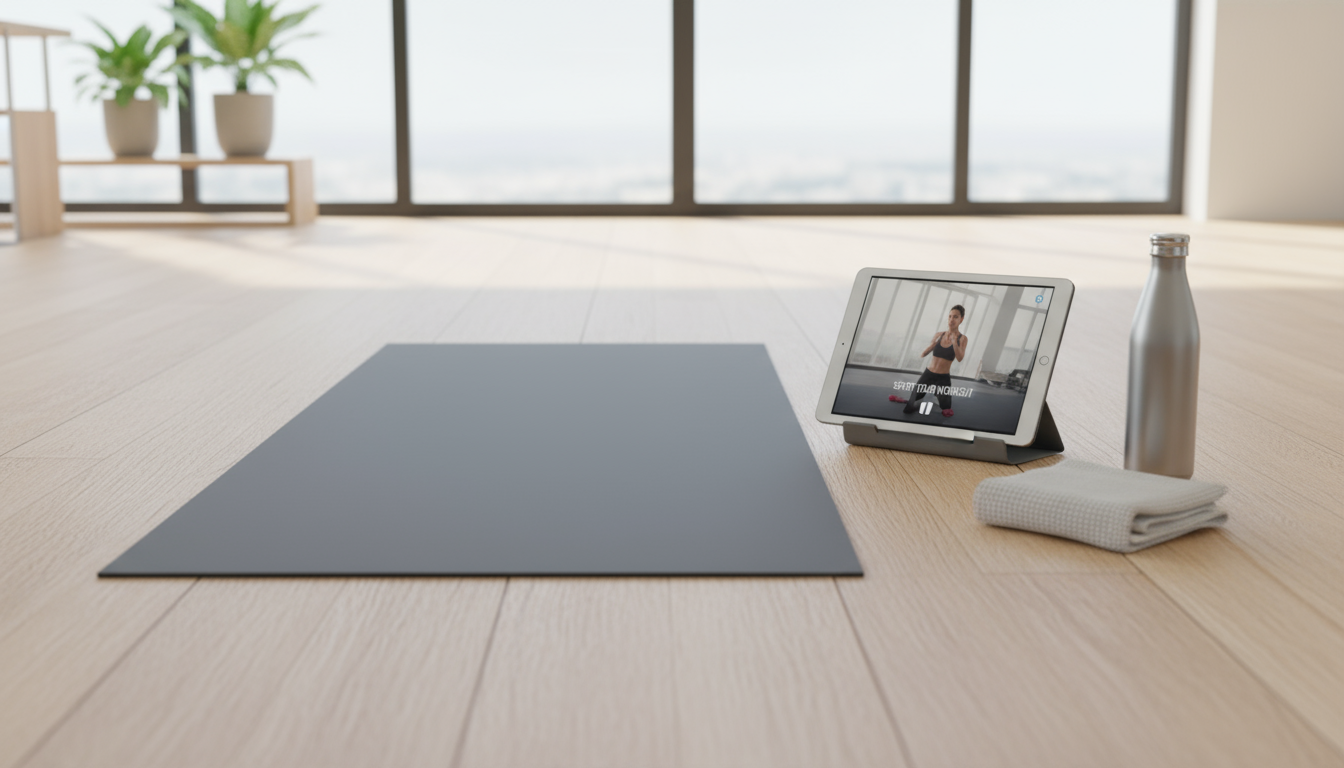
Example 1: The Evening Wind-Down Routine
The Goal: To release the tension of the day and improve flexibility before bed.
The Identity: “I am a person who takes care of my body and mind.”
Imagine you’ve just finished your evening routine—you’ve brushed your teeth and are getting ready for bed. This is your cue. Instead of immediately getting into bed and picking up your phone, you have your yoga mat already unrolled in a corner of your bedroom. You’ve reduced the friction to almost zero. Your Minimum Viable Action is to step onto the mat and perform a single child’s pose, holding it for five deep breaths. That’s it. That’s the win for the day. On most nights, however, you might find that once you’re on the mat, it feels good to keep going. You might flow into a gentle cat-cow stretch, then a downward-facing dog, holding each for a few breaths. You spend a total of five minutes just moving and breathing. The reward isn’t just the physical sensation of releasing tight shoulders or a stiff back; it’s the profound psychological reward of calming your nervous system before sleep. You feel more relaxed, less cluttered in your mind, and you sleep better. This reinforces the habit loop, making you more likely to step on the mat tomorrow night.
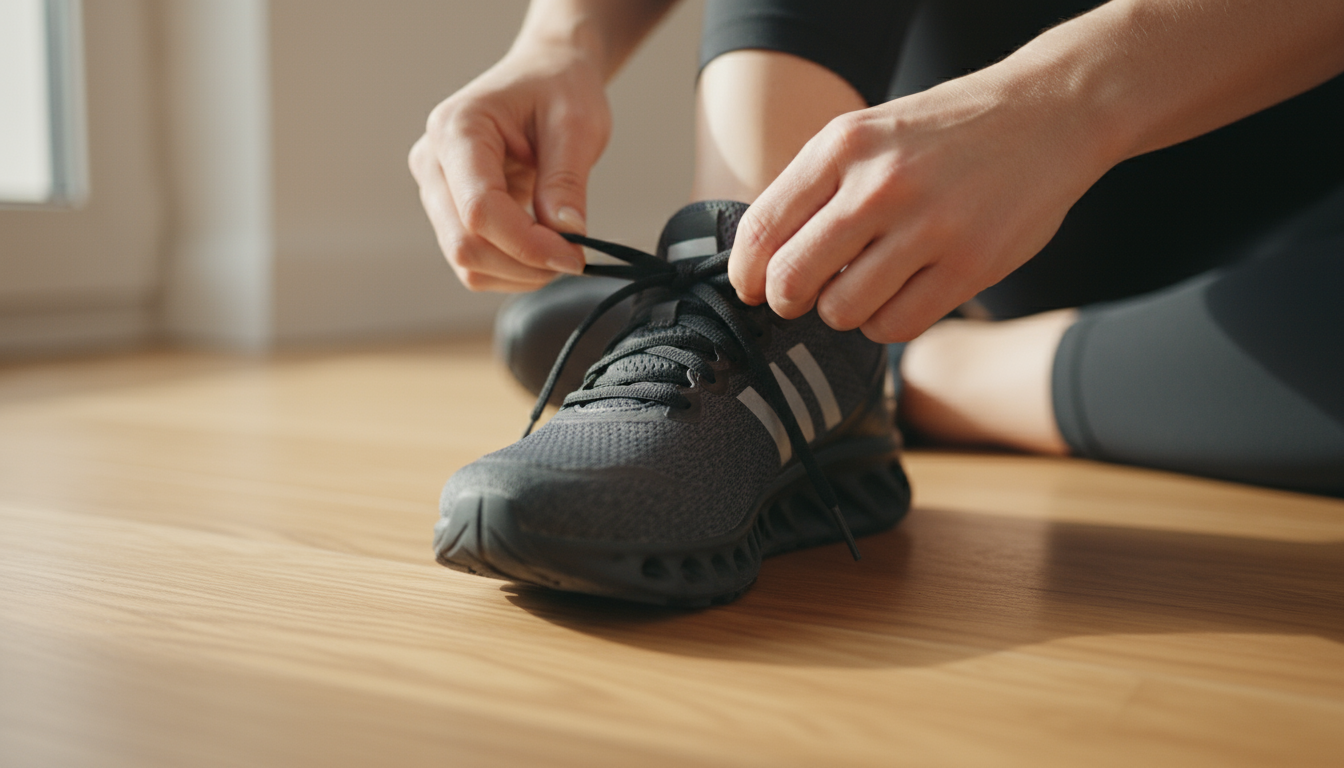
Example 2: The Morning Focus Primer
The Goal: To energize the body and prime the brain for a productive day.
The Identity: “I am a person who starts my day with energy and intention.”
Your alarm goes off, and you head to the kitchen to start the coffee maker. The sound of the machine starting is your cue. This is a perfect example of habit stacking. While the coffee brews, you have a 3-4 minute window. You’ve made it easy for yourself by placing a sticky note on the coffee machine that says, “Time to move!” Your Minimum Viable Action is to do five bodyweight squats. It takes less than 30 seconds. But again, you’ll likely find that action begets more action. After the five squats, you might add five push-ups against the kitchen counter and then 30 seconds of jumping jacks to get your heart rate up. By the time your coffee is ready, you’ve completed a three-minute, full-body workout. The immediate reward is the rush of endorphins. You feel more awake, your mind is clearer, and you feel a sense of accomplishment before you’ve even had your first sip of coffee. You’re not just making coffee; you’re priming your body and mind for the day ahead. This feeling of focus and energy becomes the powerful reward that makes you eager to repeat the routine tomorrow.
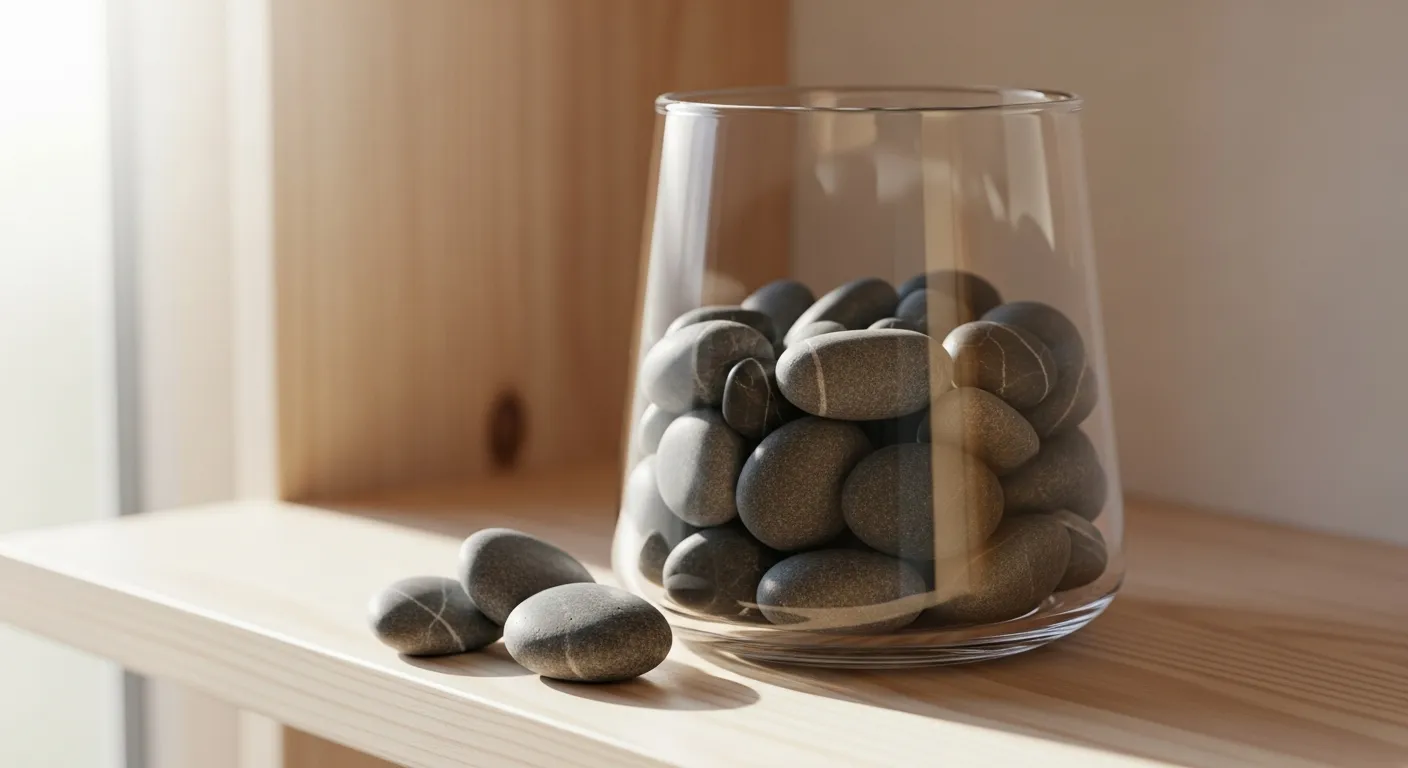
Frequently Asked Questions About Building a Workout Habit
It’s natural to have questions when starting a new journey. Here are answers to some of the most common queries about creating a consistent workout routine.
How long does it really take to form a workout habit?
You may have heard the popular myth that it takes 21 days to form a habit. While a nice, simple number, research shows it’s more complicated than that. A landmark study published in the European Journal of Social Psychology found that the time it took for a new habit to feel automatic ranged from 18 to 254 days. The average was 66 days. The key takeaway is that there is no magic number. It depends on the person, the complexity of the habit, and the consistency of the practice. Instead of focusing on a deadline, focus on the process. Concentrate on showing up each day and performing your Minimum Viable Action. The feeling of automaticity will develop over time. Be patient with yourself; you are rewiring your brain for long-term success.
What should I do on days I travel or feel sick?
This is where the concepts of MVA and “never miss twice” are essential. Life is not perfectly predictable. On days when your normal routine is impossible, the goal is to keep the thread of the habit alive. If you’re sick, perhaps your MVA is simply doing a few gentle stretches in bed. If you’re in a hotel room, your MVA could be 10 bodyweight squats before you head out for the day. The point isn’t the intensity of the workout; it’s the act of maintaining your identity as “someone who moves every day.” By scaling down your habit to fit the circumstances, you avoid breaking the chain completely and make it infinitely easier to ramp back up when your normal routine resumes.
I’m being consistent, but I’ve hit a plateau. What now?
A plateau can be physical (you’re not seeing changes in strength or endurance) or mental (you’re feeling bored). First, celebrate your consistency! You’ve successfully built the habit, which is the hardest part. Now you can start to gently introduce variation. This doesn’t mean you need to overhaul your entire routine. Small tweaks can make a big difference. If you’ve been doing bodyweight squats, try holding a heavy book for added resistance. If you walk for 15 minutes every day, try incorporating a few one-minute intervals of faster walking. If you’re bored, try a new yoga video online or a different walking route. The foundation of your workout habit is solid; now you have the freedom to play and explore on top of it.
Can I try to build multiple fitness habits at once?
It is highly recommended to start with one, and only one, new habit at a time. As we’ve discussed, willpower is limited. Trying to build a running habit, a meditation habit, and a healthy eating habit all at once will likely deplete your mental resources and lead to none of them sticking. Pick the single most important habit that will have the biggest positive impact on your life right now. Focus all your energy on making that one habit automatic using the system of MVA, friction reduction, and environmental cues. Once that first habit is so ingrained that you do it without thinking, you can then apply the same system to build the next one.
What if I just don’t feel motivated to work out?
This is the most important question of all. The secret is that motivation is not a prerequisite for action; it is often the result of action. You are waiting for a feeling that may never come. Successful people don’t wait until they feel motivated. They rely on their system. They have a cue that triggers the action, and they’ve made the action so small (MVA) that it’s easy to start. Almost invariably, once you begin the physical movement, the motivation and positive feelings follow. Don’t wait to feel good to start. Start, and you will feel good. This is the fundamental shift from a willpower-based approach to a system-based one.

Your First Month of Consistency
We’ve covered a lot of ground, from the neuroscience of the habit loop to the practical design of a sustainable system. The goal of building a workout habit is not to achieve a punishing ideal of fitness overnight. It is to build a kind, consistent, and lifelong relationship with movement. It’s about replacing the cycle of intense effort and burnout with a gentle, upward spiral of small, daily wins.
You don’t need more motivation or a flash of inspiration. You need a better system. You need to make showing up so easy that it becomes second nature. By focusing on your identity, starting with an action so small it’s laughable, and designing your environment to support you, you are setting yourself up for success. Remember to be compassionate with yourself. When you miss a day, don’t spiral. Just show up the next day. That’s it. That’s the whole game.
Here are your next steps. Don’t just read them; take a moment to act on at least one, right now.
1. Define Your Identity (Next 5 Minutes): Take out a piece of paper or open a note on your phone. Write down the answer to this question: “Who is the type of person I wish to become?” Frame it in the present tense, such as, “I am a person who is active and energetic.” This is your anchor.
2. Choose Your Minimum Viable Action (Next 10 Minutes): Based on that identity, what is the absolute smallest action you can take to reinforce it? Is it one push-up? Putting on your running shoes? Rolling out your yoga mat? It should feel almost too easy. This is your starting point.
3. Schedule Your Habit (Next 15 Minutes): Decide when and where you will perform your MVA. Use habit stacking. Will it be right after you brush your teeth? While the coffee brews? As soon as you change out of your work clothes? Write it down in this format: “After/When [CURRENT HABIT], I will [NEW MVA].” Put a reminder in your phone or a note where you’ll see it.
4. Prepare Your Environment (Tonight): Before you go to bed tonight, set up the cue for your new habit. Lay out your workout clothes. Put your yoga mat in the middle of the floor. Place your running shoes by the door. Reduce the friction for your future self. Make it easy for them to succeed tomorrow.
That’s your plan for the next 7 to 30 days. Don’t worry about the future. Don’t worry about the intensity. Just focus on performing your tiny action, every single day. Cast that vote for your new identity. One small step at a time, you will build a consistent workout habit that truly lasts.
Disclaimer: The information provided in this article is for informational purposes only and is not intended as a substitute for professional medical advice, diagnosis, or treatment. Always seek the advice of your physician or other qualified health provider with any questions you may have regarding a medical condition or before beginning any new exercise program.






